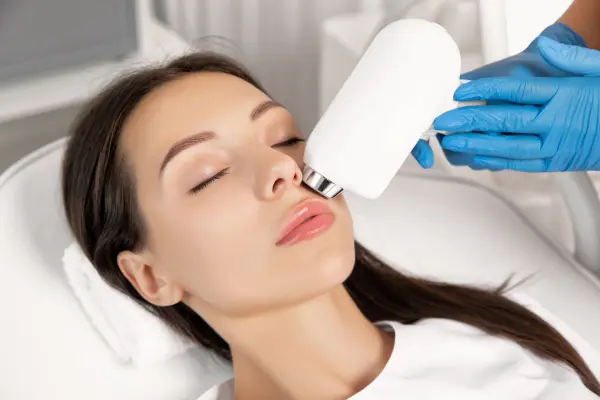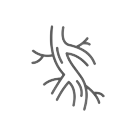Understanding IPL Photofacials
IPL Photofacials are effective and economical treatments for removal of sun damage, age spots, Melasma and skin redness arising from rosacea and related vascular conditions.
Photofacials are also a great option for improving fine lines, wrinkles and large pores and are also popular for acne treatments.

What are IPL Photofacials?
Photofacials, as the term suggests, involve the use of light to rejuvenate the skin, thus giving you a facial-like glow. They are non-invasive treatments that harness light-based technology to treat a variety of skin issues. The primary goal of a photofacial is to enhance the appearance and condition of the skin.
So, what does a photofacial do exactly? It leverages light to boost the production of collagen, lighten hyperpigmentation (brown spots), and diminish broken capillaries. Essentially, it helps rejuvenate the skin and give it a healthier, younger appearance.
One of the most popular types of photofacials is IPL, which stands for Intense Pulsed Light. IPL photofacials use broad-spectrum light to treat various skin conditions. The “intense” in the name refers to the intensity of the light pulses used. And, unlike laser treatments, which use a single, focused wavelength of light, IPL treatments utilize a broader spectrum, targeting multiple layers of skin at once. This allows them to address a multitude of skin concerns simultaneously.
The diversity in wavelengths allows IPL to target various chromophores (parts of a molecule responsible for its color) in the skin. Depending on the specific skin concern being addressed, the IPL device is adjusted to emit light at the optimal wavelength for that condition.
For example, when treating pigmented lesions like age spots or freckles, the light is usually set to a wavelength between 515 to 1200 nanometers to target melanin in the skin. Conversely, for vascular lesions or redness from rosacea, the wavelength is often set between 500 to 1200 nanometers to target oxyhemoglobin in the blood vessels.
Benefits of IPL Photofacials
IPL photofacials offer a multitude of benefits that contribute to their popularity in non-invasive skin rejuvenation. One of the primary advantages of IPL is the ability to improve the skin’s overall tone and texture. By stimulating the production of collagen, a critical protein responsible for skin elasticity and firmness, IPL treatments contribute significantly to a more youthful and vibrant skin.
Reducing Skin Coloration With IPL
By targeting areas of pigmentation, IPL can minimize the appearance of brown spots and age spots, common manifestations of sun damage or aging. Additionally, IPL can address issues of redness and broken capillaries by targeting the blood vessels beneath the skin’s surface. This capability makes it an attractive option for individuals suffering from conditions like rosacea.
Another benefit of IPL treatments is their capacity to shrink large pores, leading to a smoother skin surface.
What Areas Does IPL Photofacials Treat?
While the face is the most common area of treatment, the versatility of IPL extends to other parts of the body as well. The neck, often a reveal of aging and sun damage, can be significantly rejuvenated by IPL treatments. The chest, another area commonly affected by sun damage, can also benefit from IPL.
The hands and arms, frequently exposed to sun, are subject to pigmentation and premature aging. IPL can help counteract these effects, making it beneficial for these areas. Even the legs can be treated with this technology addressing issues like pigmentation, small veins, and sun damage.
is IPL Photofacial Safe?
Safety is a critical consideration when evaluating any skincare treatment, including Intense Pulsed Light (IPL) photofacials. The good news is that when performed by a trained and experienced professional, IPL treatments are generally considered safe.

The IPL technology has been extensively studied and used in the medical and cosmetic fields for many years, demonstrating a strong track record of safety. It’s a non-invasive skin treatment, meaning it doesn’t involve any incisions or injections. The light energy used in IPL treatments is also of a lower intensity compared to other light-based treatments, such as laser therapy, reducing the risk of burns or injuries.
It’s also worth noting that while IPL treatments can be effective for a variety of skin conditions and types, they may not be suitable for everyone. Individuals with very dark skin, for example, may have an increased risk of side effects due to higher melanin levels in their skin. The most common side effects are mild and temporary, including redness, swelling, and minor discomfort during the treatment, which typically resolve within a few hours to a couple of days post-treatment. Likewise, people with certain medical conditions or who are pregnant may be advised to avoid IPL treatments.
Preparing for an IPL Photofacial
If you’ve decided to go for an IPL photofacial, there are several important steps to consider in the preparation phase to ensure optimal results and minimize potential side effects.
Firstly, it’s crucial to understand that sun exposure and tanning, either from the sun or tanning beds, can increase the risk of complications from IPL treatments. Therefore, it’s recommended that you avoid direct sunlight and tanning for at least two weeks before your treatment. If you must be outside, make sure to use a broad-spectrum sunscreen with an SPF of 30 or higher and reapply as necessary.

If you’ve decided to go for an IPL photofacial, there are several important steps to consider in the preparation phase to ensure optimal results and minimize potential side effects.
Firstly, it’s crucial to understand that sun exposure and tanning, either from the sun or tanning beds, can increase the risk of complications from IPL treatments. Therefore, it’s recommended that you avoid direct sunlight and tanning for at least two weeks before your treatment. If you must be outside, make sure to use a broad-spectrum sunscreen with an SPF of 30 or higher and reapply as necessary.

Next, certain medications and skincare products may increase your skin’s sensitivity to light, potentially affecting the outcome of the IPL treatment. These may include certain antibiotics, anti-inflammatory drugs, and skincare products containing ingredients such as retinol or glycolic acid. It’s important to disclose any medications or skincare products you’re currently using during your consultation so your provider can advise you properly.
In the days leading up to your IPL treatment, you may be advised to cleanse the treatment area and exfoliate gently to remove dead skin cells. This can allow the light to penetrate more effectively and lead to better results.
On the day of your treatment, make sure your skin is clean and free of any makeup, lotions, or other products. It’s also recommended that you wear comfortable clothing, preferably with easy access to the treatment area.
Remember, each individual’s skin type and condition can require different pre-treatment care, so the guidelines mentioned above are general recommendations. Your skincare professional will provide you with detailed instructions tailored to your specific needs.
Photofacial Before and After
The process of an IPL photofacial and the results you can expect to see before and after the treatment can vary depending on individual skin conditions. However, understanding the general process can provide a clear picture of what to expect.

Before an IPL Photofacial
Before your treatment, you’ll have a consultation with a skincare professional to discuss your skin concerns, medical history, and treatment goals. At MDSpa we assess your skin type and conditions to determine if IPL is the right treatment for you.
Your skin may have visible signs of the conditions you’re hoping to treat with IPL, such as sun damage, hyperpigmentation, broken capillaries, or redness. If you’ve followed the recommended preparation steps, your skin should be clean, exfoliated, and free from sun exposure or tanning.
During the treatment, the provider will use an IPL device that emits light pulses onto your skin. You may feel a sensation similar to a rubber band snap during the procedure, but most people find it tolerable. The treatment usually takes around 20-30 minutes, depending on the size of the area being treated.
After an IPL Photofacial
Immediately following an IPL photofacial, you might experience some redness, similar to a mild sunburn, and your skin may feel warm to the touch. These effects typically subside within a few hours to a couple of days.
Over the next several days to weeks, you should start to see improvements in your skin. Pigmented lesions may darken initially, and then flake off or fade. Redness or vascular lesions should decrease, and your skin’s tone and texture should improve as collagen production is stimulated.
Remember that multiple sessions (usually 3-6) spaced a few weeks apart might be needed to achieve optimal results. After completing the series of treatments, the before-and-after difference can be quite dramatic, with significant reductions in skin discoloration, redness, and visible signs of aging, and improvements in skin texture and overall complexion.
Post-treatment, it’s crucial to protect your skin from the sun, as it will be more sensitive to sunlight. Regular use of a broad-spectrum sunscreen and avoidance of direct sun exposure can help maintain your results.

Frequently asked Questions
Photofacial is a new treatment for skin rejuvenation provided by Intense Pulsed Light system that
delivers energy directly to the skin exerting a desired therapeutic effect like removal of color from
vascular lesions or erasing sun damage.
Light energy delivered by an IPL system is felt like a snap from an elastic rubber band.
For patients to get the best IPL results, it is generally recommended that patients receive, on average 3 t0 6 treatments scheduled several weeks apart.













